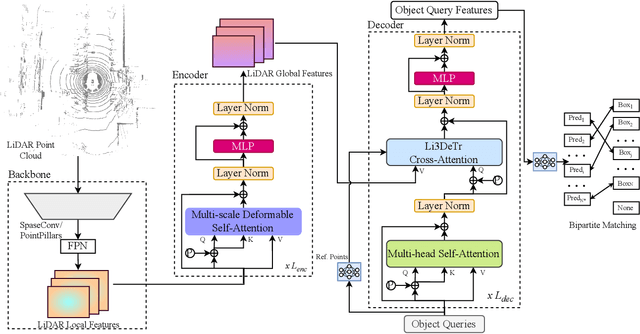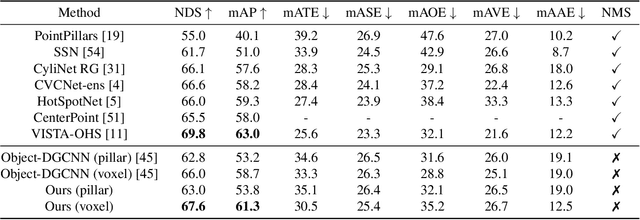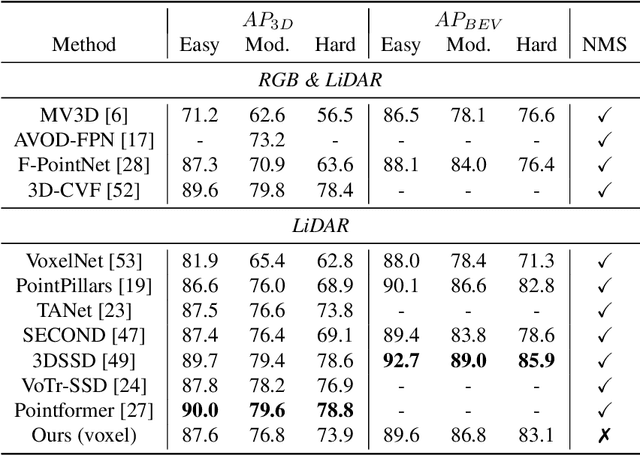Gopi Krishna Erabati
Li3DeTr: A LiDAR based 3D Detection Transformer
Oct 27, 2022



Abstract:Inspired by recent advances in vision transformers for object detection, we propose Li3DeTr, an end-to-end LiDAR based 3D Detection Transformer for autonomous driving, that inputs LiDAR point clouds and regresses 3D bounding boxes. The LiDAR local and global features are encoded using sparse convolution and multi-scale deformable attention respectively. In the decoder head, firstly, in the novel Li3DeTr cross-attention block, we link the LiDAR global features to 3D predictions leveraging the sparse set of object queries learnt from the data. Secondly, the object query interactions are formulated using multi-head self-attention. Finally, the decoder layer is repeated $L_{dec}$ number of times to refine the object queries. Inspired by DETR, we employ set-to-set loss to train the Li3DeTr network. Without bells and whistles, the Li3DeTr network achieves 61.3% mAP and 67.6% NDS surpassing the state-of-the-art methods with non-maximum suppression (NMS) on the nuScenes dataset and it also achieves competitive performance on the KITTI dataset. We also employ knowledge distillation (KD) using a teacher and student model that slightly improves the performance of our network.
MSF3DDETR: Multi-Sensor Fusion 3D Detection Transformer for Autonomous Driving
Oct 27, 2022Abstract:3D object detection is a significant task for autonomous driving. Recently with the progress of vision transformers, the 2D object detection problem is being treated with the set-to-set loss. Inspired by these approaches on 2D object detection and an approach for multi-view 3D object detection DETR3D, we propose MSF3DDETR: Multi-Sensor Fusion 3D Detection Transformer architecture to fuse image and LiDAR features to improve the detection accuracy. Our end-to-end single-stage, anchor-free and NMS-free network takes in multi-view images and LiDAR point clouds and predicts 3D bounding boxes. Firstly, we link the object queries learnt from data to the image and LiDAR features using a novel MSF3DDETR cross-attention block. Secondly, the object queries interacts with each other in multi-head self-attention block. Finally, MSF3DDETR block is repeated for $L$ number of times to refine the object queries. The MSF3DDETR network is trained end-to-end on the nuScenes dataset using Hungarian algorithm based bipartite matching and set-to-set loss inspired by DETR. We present both quantitative and qualitative results which are competitive to the state-of-the-art approaches.
 Add to Chrome
Add to Chrome Add to Firefox
Add to Firefox Add to Edge
Add to Edge